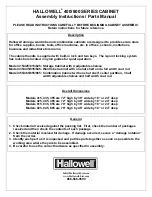
Travelstar 5K160 (SATA) Hard Disk Drive Specification
53/167
The Advanced Power Management feature is independent of the Standby timer setting. If both
Advanced Power Management level and the Standby timer are set, the device will go to the Standby
state when the timer times out or the device’s Advanced Power Management algorithm indicates
that it is time to enter the Standby state.
The IDENTIFY DEVICE response word 83, bit 3 indicates that Advanced Power Management
feature is supported if set. Word 86, bit 3 indicates that Advanced Power Management is enabled if
set.
Word 91, bits 7-0 contain the current Advanced Power Management level if Advanced Power
Management is enabled.
12.6.1
Performance Idle mode
This mode is usually entered immediately after Active mode command processing is complete,
instead of conventional idle mode. In Performance Idle mode, all electronic components remain
powered and full frequency servo remains operational. This provides instantaneous response to the
next command. The duration of this mode is intelligently managed as described below.
12.6.2
Active Idle mode
In this mode, power consumption is 45-55% less than that of Performance Idle mode. Additional
electronics are powered off, and the head is parked near the mid-diameter of the disk without
servoing. Recovery time to Active mode is about 20ms.
12.6.3
Low Power Idle mode
Power consumption is 60%-65% less than that of Performance Idle mode. The heads are unloaded on
the ramp, however the spindle is still rotated at the full speed. Recovery time to Active mode is about
300ms.
12.6.4
Transition Time
The transition time is dynamically managed by users recent access pattern, instead of fixed times.
The ABLE-3 algorithm monitors the interval between commands instead of the command frequency
of ABLE-2. The algorithm supposes that next command will come with the same command interval
distribution as the previous access pattern. The algorithm calculates the expected average saving
energy and response delay for next command in several transition time case based on this
assumption. And it selects the most effective transition time with the condition that the calculated
response delay is shorter than the value calculated from the specified level by Set Feature Enable
Advanced Power Management command.
The optimal time to enter Active Idle mode is variable depending on the users recent behavior. It is
not possible to achieve the same level of Power savings with a fixed entry time into Active Idle
because every users data and access pattern is different. The optimum entry time changes over time.
The same algorithm works for entering into Low Power Idle mode and Standby mode, which
consumes less power but need more recovery time switching from this mode to Active mode.
12.7
Interface Power Management Mode
(Slumber and Partial)
Interface Power Management Mode is supported by both Device-initiated interface power
management and Host-initiated interface power management. Please refer to the Serial ATA
Specification about Power Management Mode.
















































